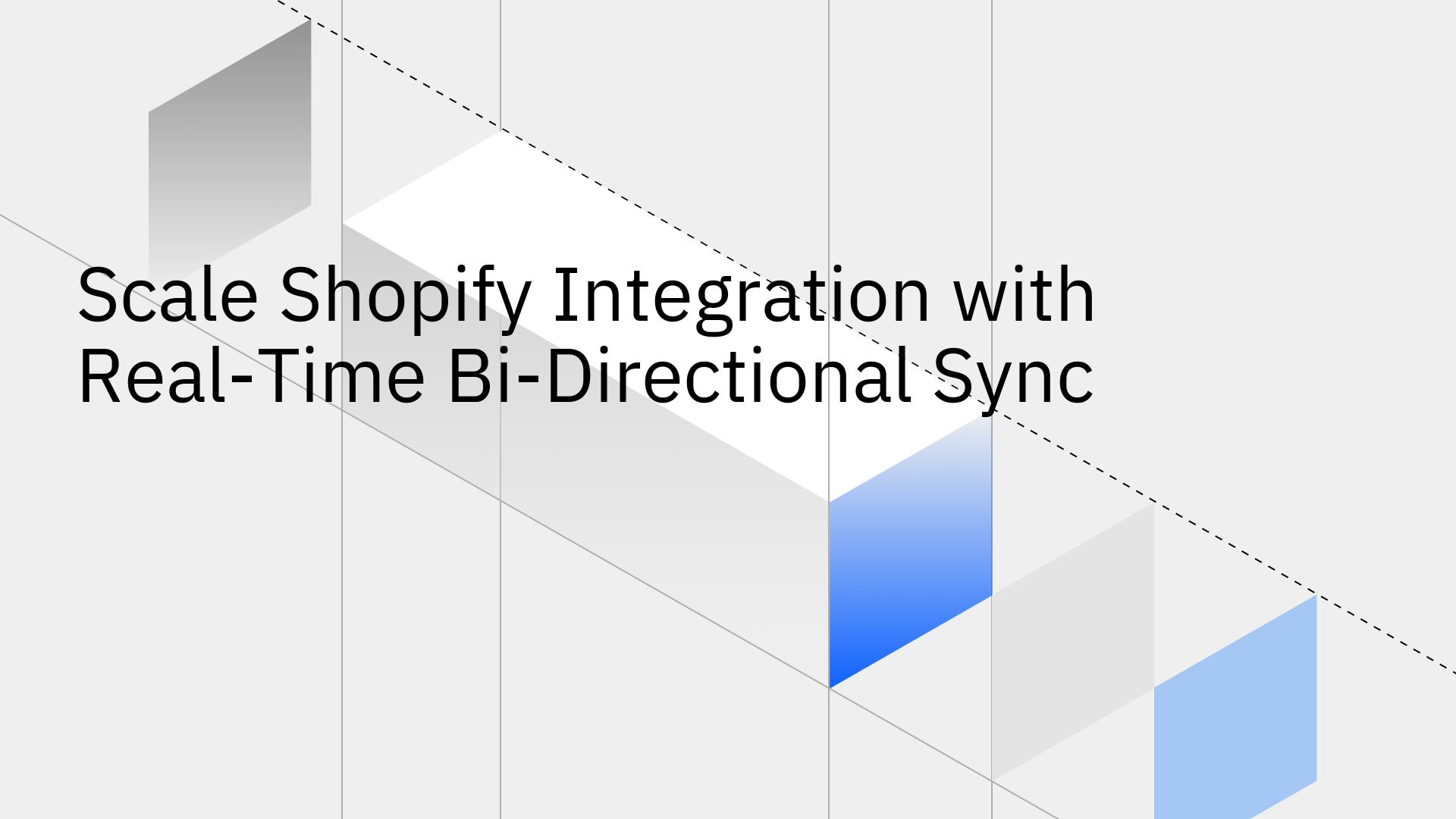
Shopify is a powerful platform for launching and managing an e-commerce business, but as sales grow, companies inevitably encounter significant shopify integration scaling challenges. While Shopify excels at storefront management, scaling operations requires seamless integration with other mission-critical systems like Enterprise Resource Planning (ERP), Customer Relationship Management (CRM), and third-party logistics (3PL) providers.
Traditional integration methods, such as batch processing or simple one-way syncs, often fail under the pressure of high order volumes, leading to operational bottlenecks, data inconsistencies, and a poor customer experience. Real-time, bi-directional synchronization is the key to overcoming these challenges and building a scalable e-commerce tech stack.
As a Shopify store's order volume, product catalog, and customer base grow, several integration-related problems emerge that can hinder progress and damage the brand's reputation.
When data is siloed, information about inventory, orders, and customers becomes inconsistent across your Shopify store, ERP, and warehouse management system. This disconnect has direct and damaging consequences, such as overselling popular items, displaying out-of-stock products as available, and providing customers with incorrect order statuses. These issues not only lead to lost sales but also erode customer trust [1].
To maintain platform stability, Shopify enforces API rate limits that govern the number of requests an application can make in a given timeframe [2]. High-volume businesses with integrations that are not optimized for scale can quickly exceed these limits, causing syncs to fail. Shopify uses a "leaky bucket" algorithm to manage request bursts, meaning frequent, unmanaged API calls from multiple apps can lead to API throttling [3]. When throttled, critical updates for orders, inventory, and customer data are delayed, disrupting core business operations. For integrations still relying on the legacy REST Admin API, these limits are even more stringent and can become a significant bottleneck [4].
A lack of automated, real-time data flow forces teams to rely on manual data entry, CSV uploads, and constant reconciliation to keep systems aligned. These manual processes are not only slow and error-prone but are completely unsustainable as a business scales. As order volumes increase, these growth-limiting challenges consume valuable resources that could be better spent on marketing, product development, and other growth-oriented activities [5]. This operational drag is a key reason many businesses re-evaluate their platform and integration strategy as they grow [6].
Many businesses initially turn to custom-coded, point-to-point integrations, believing it's a quicker solution for a single connection [7]. However, these solutions are inherently rigid and become difficult to maintain. When a system's API changes or a new application needs to be added, the entire integration can break, requiring significant and costly engineering effort to fix. A recent IDC report noted that 67% of business leaders are considering changing their e-commerce platforms, often because their outdated custom platforms require excessive maintenance and limit innovation [8].
Instead of struggling with these scaling challenges, forward-thinking brands are turning to platforms designed specifically to solve them. Stacksync provides the real-time, bi-directional synchronization needed to build a resilient and scalable e-commerce operation. This means data flows instantly and automatically between Shopify and all connected systems, creating a single, reliable source of truth across the organization.
Stacksync's real-time architecture ensures that an order placed on Shopify is instantly created in your ERP, and an inventory update in your warehouse is immediately reflected on your storefront. This approach eliminates issues like overselling and provides customers with accurate, up-to-the-minute information on product availability and order status. For modern e-commerce teams, this level of data consistency is not a luxury it's a requirement for building a competitive customer experience.
Stacksync is engineered to manage high-volume data flows without issue. Our platform's Smart API Rate Limits feature intelligently manages and batches API calls to avoid throttling, ensuring your integrations run smoothly even during peak sales periods like Black Friday. With an elastic architecture designed for hyper-growth, you can scale your data synchronization from thousands to millions of records without performance degradation or worrying about API limits.
A bi-directional sync platform automates critical e-commerce processes, freeing your team from manual, repetitive tasks. With a robust integration in place, you can:
For instance, you can use our enterprise-grade connectors to build a powerful and automated workflow between Shopify and NetSuite. The ability to power a real-time NetSuite Shopify integration is a game-changer for scaling businesses that need to align their storefront with financial and operational backbones.
A mission-critical e-commerce business cannot afford silent integration failures. Our Shopify two-way sync integration is built for enterprise-grade reliability. Stacksync’s Issue Management dashboard provides complete visibility into your data flows, preventing silent failures by alerting your team to any sync issues. This allows you to retry or revert failed operations with a single click, ensuring data integrity and operational continuity. This level of monitoring and control is essential for maintaining a healthy, resilient tech stack.
To successfully scale a Shopify business, you must move beyond manual processes and brittle, high-maintenance integrations. Real-time, bi-directional synchronization is the foundation for an efficient, scalable, and resilient e-commerce operation that can handle growth and delight customers.
Stacksync provides the enterprise-grade solution that empowers businesses to automate operations, achieve a single source of truth, and deliver a superior customer experience.
Ready to build a scalable integration strategy?
Start syncing today with a 14-day free trial.